THE HONEY BEE HEALTH IMPROVEMENT PROJECT
ABOUT
The mysterious disappearance of bees, called Colony Collapse Disorder (CCD), is a growing threat to Honey Bees, the mainstay of pollination services in agriculture. The North American Pollinator Protection Campaign (NAPPC), a tri-national coalition dedicated to promoting the health of all pollinators partners with different organizations to perform research for improving the health of honey bees and reversing the threats they face. The Honey Bee Health Improvement Project focuses on ways to help Honey Bees and beekeepers. In the absence of Colony Collapse Disorder, this task force will seek out and secure funding for innovative and important work to understand and promote genetic stock improvements, understand and promote best management practices for commercial beekeeping, and promote forage opportunities for colonies on public and private land. read the latest compendium from the OPERA Research Center on the latest bee health in Europe.
The North American Pollinator Protection Campaign (NAPPC) is seeking proposals for research related to improving the health of honey bees.
Even if you aren't a scientist able to do research, you can play an important role in increasing research related to the health of Honey bees. Give now and your money will go directly to the Honey Bee Health Improvement Project.
|
|
2011 Swanson Foundation and Burt's Bees: Partnering for Honey Bee Health
|
|
2011 Honey Bee Health Improvement Projects
Effects of pesticides on honey bee behavior, physiology and/or colony health Christian Krupke with Hunt, Greg and Eitzer, Brian; Purdue University Quantifying routes of exposure of honeybees to neo-nicotinoid seed treatments of corn.
The development of diagnostics or indicators for the presence of stressors that effect honey bee health, particularly those that can be used by beekeepers Christopher Mayack; Colorado State University Forager Energetic Stress as a Casual Mechanism for the Depopulation of Honeybee Colonies
Development of methods to improve genetic stocks of managed honey bee populations Thomas Seeley, Delaney, Deborah and Tary; David Cornell University Genetic evaluation of a survivor stock in the northeastern United States: the honey bees of the Arnot Forest
Effects of climate or environmental variables on: a) plants, especially nectar and pollen quantity and quality; and/or b) honey bee physiology and/or colony health Martha Lopezaraiza Mikel with Quesada Avendano; Mauricio Universidad Nacional Autonoma de MexicoAssessing floral resources availability in the tropical dry forest and agricultural sites of the Pacific Coast of Jalisco, Mexico to promote honey bee colony maintenance and health.
|
|
2009 & 2010 NAPPC and The Swanson Foundation: Partnering for Honey Bee Health
|
Honey Bee Health Research Projects of 2010
Sublethal Doses of the Pesticide Imidacloprid Alters Honey Bee (Apis mellifera) Response Threshold and Optic Flow, Potentially Affecting Colony HealthDaren M. Eiri and James C. Nieh
Much attention on honey bee declines has focused on the sublethal effects the pesticide, imidaclorpid, has on honey bee behavior. How it affects individual foragers and their ability to navigate to communicated food sources or their preferences for nectar is unknown. Using tunnels to provide optic flow, preliminary data suggest that bees treated with sublethal doses of imidacloprid travel shorter distances than control bees to a trained location. We also use the proboscis extension reflex (PER) assay to test an individual’s response threshold. Bees treated with the pesticide have higher response thresholds and respond less often to high concentrations of sucrose than control bees. The navigational inefficiency and increased preference for sweeter sucrose concentrations may contribute to a colony’s decline.
A Survey of Water sources used by honey bees for imidacloprid contamination. Josephine Johnson, doctoral candidate, University of Maryland, Baltimore, Dept of Toxicology (P.I.), Dr. Jeff Pettis, USDA Bee Research Lab, and Dr. Katherine Squibb, University of Maryland, Baltimore, Dept. of Toxicology
Imidacloprid (IMI), a neonicotinoid pesticide, is water soluble and has had sub-lethal effects on honey bees. The intent in this study was to determine the presence of IMI in water sources frequented by honey bees across the state of Maryland. Rural, suburban, and urban sites were chosen for sampling and IMI was found in 9 samples at a range of 7 -131 ppb in a total of 108 samples. Thirteen other samples gave results at the threshold of detection (0.2-.3ppb). Positive samples accounted for 19 % of all samples. Water sampling occurred on Jun 1-2, 2010 and ELISA results were available in Sept 2010 .The decision was made to resample positive samples on Oct 15-18, 2010 and to assay them by GC/MS as a comparison of methodology and time lapse in IMI concentrations. The results of the October samples (analysis completed on Nov 20, 2010) generally showed smaller concentrations, perhaps due to degradation of IMI in the environment or a cleansing by environmental circumstance (rain, snow). Notably, some samples that had shown no detection in June showed positive detection of IMI in October suggesting that concentrations of IMI in water sources may shift as water shifts or as weather, the environment, or human interactions change circumstances. In conclusion, this study showed that imidacloprid is present in 19% of water sources frequented by honey bees and the levels of imidacloprid shift with time presumably due to changes from weather, environment, degradation, and human interaction.
Evaluating effects of pollen quality on honey bee physiology, colony growth and behavior Ramesh Sagili Department of Horticulture, Oregon State University
In the wake of deteriorating honey bee health, bee nutrition has attained greater importance than ever. Loss of habitat and large monocultures have restricted the diet of honey bee. Specific objectives of this proposal were
1) to evaluate and compare the effects of single source pollen consumption versus mixed source pollen consumption on hypopharyngeal gland protein content, bee mass, lipid content, colony growth, immunocompetence and learning behavior in the honey bee and 2) to design a field test to assess the nutritional status of honey bee colonies in the field. Nurse bee hypopharyngeal gland protein content and colony growth in single-source pollen treatments were significantly low compared to multi-source pollen treatments (P < 0.01 and P < 0.05 respectively). Single-source pollen (SSP) treatments had significantly lower phenoloxidase and prophenoloxidase activity when compared to multiple-source pollen (MSP) treatments (P <0.001). BSA visual standard for the four trea tments (no protein, 10% protein, 20% protein and 40% protein) was developed. We plan to compare the protein contents of field samples to this established standard.
Development of novel Varroa mite control methods from attractant and arrestants isolated from brood host volatiles Mark J. Carroll, Drs. Adrian Duehl and Peter E. A. Teal USDA-ARS, Carl Hayden Bee Research Center
One approach for the control of Varroa mite is the identification of semiochemicals (signaling chemicals) that the mite uses to find its hosts. During cell invasion, a female mite detects and moves into the cell of an older bee larva just before capping. Two volatiles named CA and CB characterized from older capping larvae were previously shown to act as excitants and arrestants to female mites in bioassays. We have begun to investigate other brood volatiles to determine if these chemicals affect mite behavior, either individually or as synergists with CA and CB, using an EthoVision behavioral analysis system to analyze mite bioassay responses. One volatile specifically associated with non-host larvae, termed CC, acts as a repellent to mites at high concentrations. The limited responsiveness of mites to these volatiles at lower concentrations suggests that these three compounds could affect mite behavior at contact or near-contact distances. We will continue our efforts to develop CA and other signaling chemicals as flooding agents (to disrupt mite chemical communication) or as trap lures to control mites in the hive environment.
Selection of honey bees for resistance to Nosema ceranae José D. Villa, A. Lelania Bourgeois, Robert G. Danka USDA, ARS Honey Bee Breeding Laboratory
N. ceranae is a widespread fungal parasite in beekeeping operations throughout North America. We surveyed the possibility of genetic resistance in ten commercial sources from a wide array of geographic and genetic origins. Queens from the ten sources were introduced into colonies kept in an infected apiary that received no treatment. Surviving colonies with original queens were sampled monthly from May 2010 to April 2011. Overall average infections through samplings for one year were moderately high (about 1 million N. ceranae per bee) but did not differ between sources. Infections in colonies from the same source varied greatly at each sampling time. Also, infection in most colonies fluctuated widely through time. A small proportion of the surviving colonies have been identified as having relatively low or high infections. Their workers will be tested in standardized, laboratory cage tests for responses when fed spores of N. ceranae. This research is part of a larger project at our laboratory using different approaches to find genetic resistance to this parasite.
|
|
|
2007 & 2008 NAPPC and Burt's Bees: Partnering for Honey Bee Health
|
|
The project of the
Pollinator Partnership, is teaming up with bee-friendly, natural personal care company
Burt’s Bees to address this environmental issue. Together, they are spearheading a campaign led by
Burt’s Bees co-founder Burt Shavitz that will raise consumer awareness through PSA distribution, online marketing and consumer sampling efforts. NAPPC and
Burt’s Bees will continue their partnership through research funding and a heightened awareness push later this year.
the Colony Collapse Disorder
Honey Bee Health Research Projects of 2007 and 2009
Effects of miticide and Fumagilin-B® on honey bee survivorship and immune responses Catherine M Little, M.Sc. candidate, Acadia University
Western honey bees (
Apis mellifera) are exposed to a number of parasites.
Varroa destructor,
Nosema apis, and
N. ceranae have particularly detrimental effects on colony productivity and survival. We will measure honey bee immune responses to infection by each of these three species of parasites and the effects of co-infection. We will then compare the results of infection with the effects of miticide and Fumagilin-B® use on honey bee physiology. Quantification of immune trade-offs which occur during infection by multiple parasites and the effects of standard chemical treatments may enable us to determine infection threshold levels for effective use of chemical treatments, thereby reducing the risk of chemical resistance developing in either
Varroa or
NosemaWe will also determine if immune protein concentrations resulting from parasitic infection are predictive of honey bee survival, potentially leading to a means of assessing mortality risk during preparations for over-wintering honey bee colonies. (See Pictures Below)

An early look at participating colonies and over-wintering sites, March 2008

Little and Williams completing detailed colony condition assesments, May 2008

A promising sign: emerging new bees in spring, May 2008
Assessment of Sublethal Effects of Imidacloprid on Honey Bee and Colony Health. Galen P. Dively and Mike Embrey, Department of Entomology,University of Maryland
While the extent and causes of CCD are unknown, many believe that honey bees have reached a tipping point wherein the colony can no longer protect itself from a barrage of problems. The CCD Working Group developed an action plan of research that addresses four categories of factors that impact bee and colony health: 1) new or re-emerging pathogens; 2) bee pests; 3) environmental and nutritional stresses; and 4) pesticides. This project will address the latter category and examine the sublethal effects of pesticides, which is one of the priority areas identified by the HBHI Task Force for funding.
Nutritional Effects on Intestinal Health and Longevity of Honey bee Workers Olav Rueppell, Dept. of Biology, University of North Carolina at Greensboro
This research project seeks to identify the effects of diet quality and malnutrition on the health of the honey bee worker intestine, as assessed by the activity of their intestinal stem cells. The intestinal epithelium is crucial to organismal health and it is one of the most exposed tissues in the animal body. Its cells are continuously replaced in a wide variety of organisms (Finch and Kirkwood 2000). Although early reports on proliferative cells in the intestine of insects exist (Snodgrass 1956), these cells have only recently been characterized as bona-fide stem cells in adults through molecular analyses in
Drosophila (Micchelli and Perrimon 2006; Ohlstein and Spradling 2006). A certain level of cell proliferation is necessary to maintain a functional intestine, even in the adult insect. Thus, the activity of these cells has been linked to insect growth (Hakim et al. 2007) and they are responsive to toxin exposure (Loeb et al. 2001; Gregorc et al. 2004). Furthermore, their rate of cell proliferation is positively correlated with food quality (Zudaire et al. 2004). Thus, the proliferative activity of intestinal stem cells may be an indicator of malnutrition with direct relevance to bee health.
Diagnostic gene panel for honey bee breeding and disease management Jay D. Evans and Yanping Chen, USDA-ARS Bee Research Laboratory
Honey bees face numerous challenges, from nutritional stress to dedicated parasites and
pathogens. A long-term goal of bee research is to develop and maintain honey bee lines
that are resistant to disease, and that thrive with a minimum of chemical treatment of
disease agents. New molecular-genetic tools can aid research on breedable traits, and,
ultimately, these tools could be used directly by commercial bee breeders or others in the private sector. Beekeepers also rely on disease indicators and established thresholds while making management decisions. Such decisions could also be helped by genetic indicators for pests and for bee health.
This gene panel would differ from previous entries into disease forensics (e.g.,
Evans, 2006) by including only the most informative markers, alongside reportable
diseases found in bee colonies. In so doing, the panel can be cheaply applied to bee
problems, and can also be ‘exported’ to future technologies for bee diagnostics and genetic research.
The Benefits of Propolis to the Immune System of Honey Bees Marla Spivak, Dept Entomology, University of Minnesota
We have initiated a comprehensive line of research in my lab on the benefits of propolis collection to the immune system of honey bees. Propolis is a resin secreted by some plants that honey bees collect and deposit in the nest. Propolis has important antimicrobial value to humans, but its value to the bees is not known. Here I am requesting funds to test if colonies selectively bred for high- and lowpropolis collection differ in immune-related gene transcript levels. The applied goals of this research are to promote the natural immune defenses of honey bees and to promote the human use of propolis as an antimicrobial value-added product from the beehive.
Enabling genetic selection for resistance to viral pathogens: Developing a rapid and inexpensive cytometric method for screening honey bees for viral resistance. Dr. J. Spencer Johnston, Department of Entomology, Texas A&M University-
Funded by Dr. Peter Swift, GDS Legacy Foundation and Reid and Margaret E. Dennis
Preliminary evidence suggests that honey bee strains are more resistant to IAPV than honey bee lines from other sources. We propose to use quantitative PCR, flow cytometry and direct monitoring of colony health to rapidly compare changes in blood cells number, pathogen titre and colony level response. We hypothesize that it will be possible to use flow cytometry to distinguish resistant bees from susceptible bees and evaluate the efficacy or extent of immune response to viral infection. If we are correct, then the results of the flow cytometry experiments could be used (in the place of more time consuming and expensive field trials) to quickly assess the presence or absence of viral resistance in aid of breeding programs to develop or propagate virus resistant honey bees. Perhaps more importantly, flow cytometry should reveal whether differential immune responses correlate with virus resistant phenotypes, offering clues to some mechanisms of viral resistance.
Changes in hormonal and protein levels in honey bees that are experiencing migratory transportation. Zachary Huang, Department of Entomology, Michigan State University
Aside from pesticides, perhaps the strongest stress honey bees experience comes from
long distance transportation, commonly used for pollination purposes. For example, bees can transported from Maine to California, across four different time zones. No studies have ever been conducted to determine the physiological or behavioral changes induced by such stress. In this study, I propose to piggyback with Dr. Jeff Pettis’s group to obtain data on physiological changes in honey bees that are experiencing migratory transportation. The objectives of this study is to 1) measure changes in juvenile hormones in bees that are being transported from Florida to California, and 2) determine the protein nutrition of the same bees. Proper control will be obtained from bees which are staying in Florida.
Update 5/19/08: We are currently measuring the hormone levels in groups of bees in Bakersfield, CA and Boston, GA. We still have to thaw the bees and bleed them for the CA samples. We might do a third trial if we see something interesting.
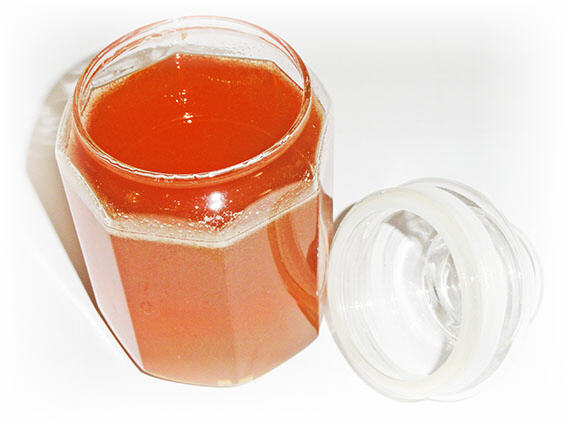

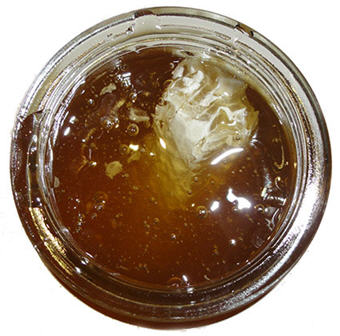
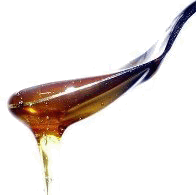 Come in and be awed by the goodness of honey, get some quick easy honey facts and interesting honey bees information, be introduced to some common bee products and their benefits and uses, scrutinize together the nutrition and properties of honey and its health benefits. Well, I probably cannot offer you medical advice on honey like a medical doctor or promote honey as a substitute for professional medical care, and I don't aim to, but as a honey enthusiast, I am eager to give you all the reasons in the most laymen, simplest language that is easy for everybody to grasp and appreciate - why honey is such a superfood, why we should feel indebted to the tireless creatures which have to visit two million flowers just to provide us
Come in and be awed by the goodness of honey, get some quick easy honey facts and interesting honey bees information, be introduced to some common bee products and their benefits and uses, scrutinize together the nutrition and properties of honey and its health benefits. Well, I probably cannot offer you medical advice on honey like a medical doctor or promote honey as a substitute for professional medical care, and I don't aim to, but as a honey enthusiast, I am eager to give you all the reasons in the most laymen, simplest language that is easy for everybody to grasp and appreciate - why honey is such a superfood, why we should feel indebted to the tireless creatures which have to visit two million flowers just to provide us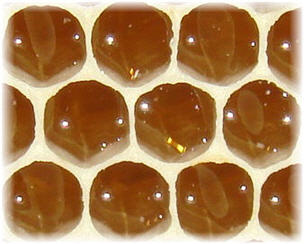
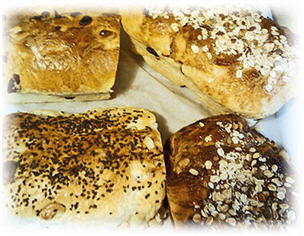 1. Next time before you go for a
1. Next time before you go for a 
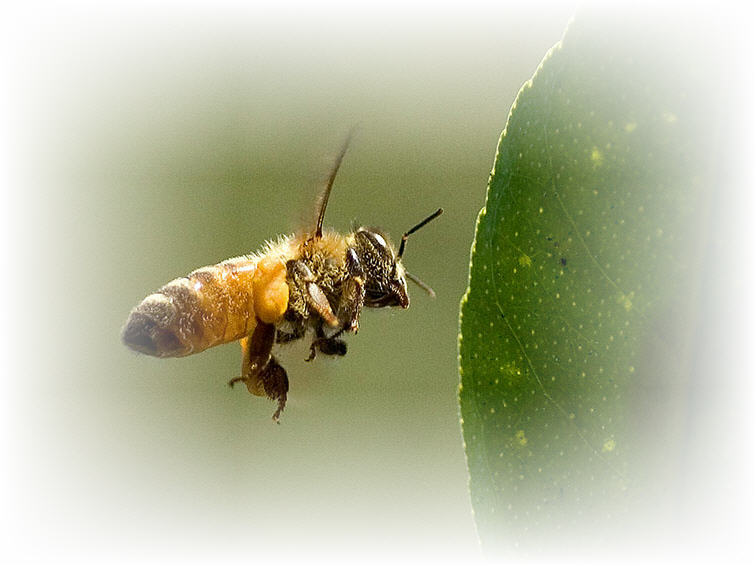
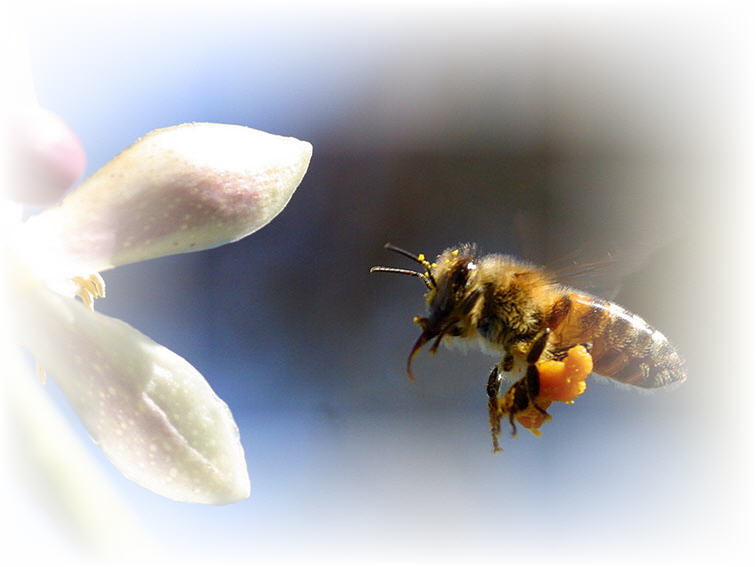
 Honeybees have a remarkably acute sense of smell. And that's why so often, we'll find them buzzing so persistently around us at picnics with spreads of food. Their keen sense of smell guides them to the flowers and pollinates them. Foraging bees can discriminate between flowers when there are a bewildering number of flowers to select from. Their odorant receptors, which are more powerful than fruit flies or mosquitoes, also allow them to find food and communicate its location to other bees.
Honeybees have a remarkably acute sense of smell. And that's why so often, we'll find them buzzing so persistently around us at picnics with spreads of food. Their keen sense of smell guides them to the flowers and pollinates them. Foraging bees can discriminate between flowers when there are a bewildering number of flowers to select from. Their odorant receptors, which are more powerful than fruit flies or mosquitoes, also allow them to find food and communicate its location to other bees. 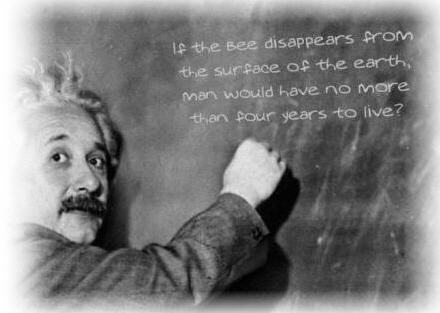


 Honey has been used for centuries to help alleviate some of the symptoms associated with a common cold. According to the American Academy of Family Physicians, many things can cause a sore throat. These include infections with viruses, such as colds and flu; sinus drainage; allergies; or cigarette smoking, among others. Sore throats caused by bacteria such as streptococci, are usually treated with antibiotics. Always check with your doctor if you have a fever, or if symptoms continue for more than a few days.
Honey has been used for centuries to help alleviate some of the symptoms associated with a common cold. According to the American Academy of Family Physicians, many things can cause a sore throat. These include infections with viruses, such as colds and flu; sinus drainage; allergies; or cigarette smoking, among others. Sore throats caused by bacteria such as streptococci, are usually treated with antibiotics. Always check with your doctor if you have a fever, or if symptoms continue for more than a few days.




